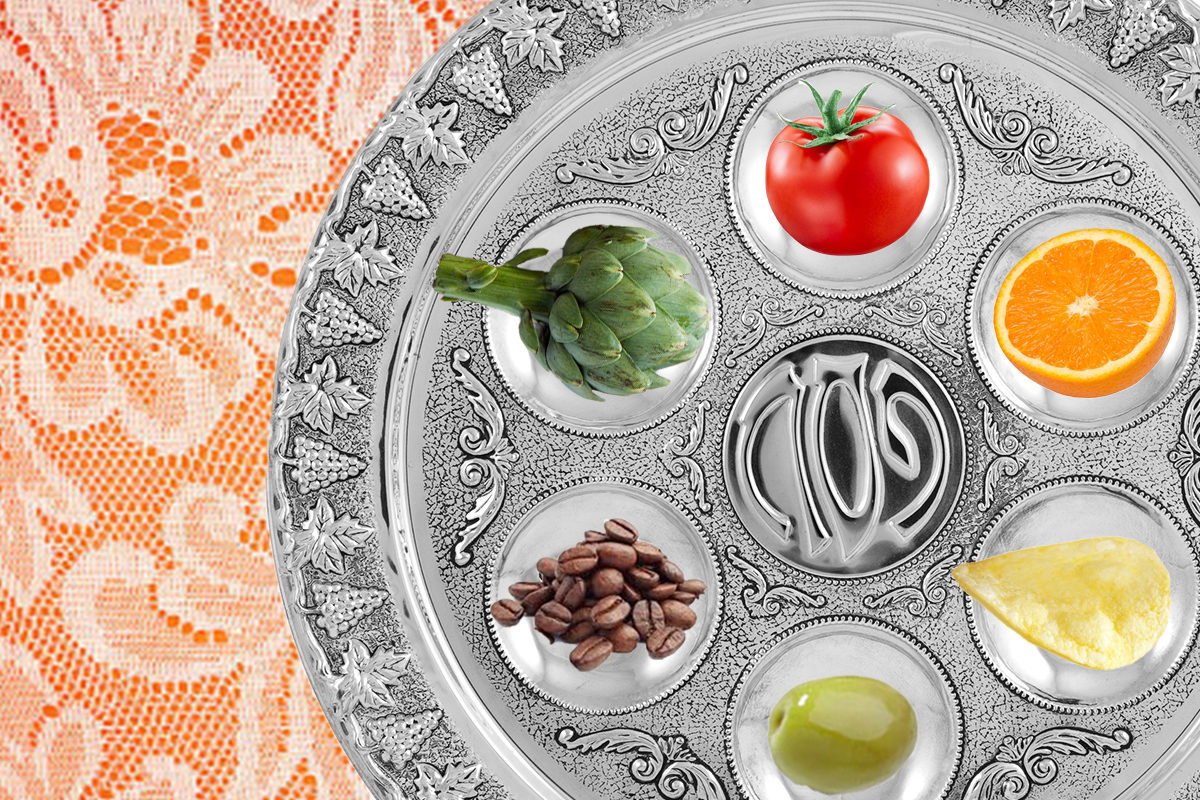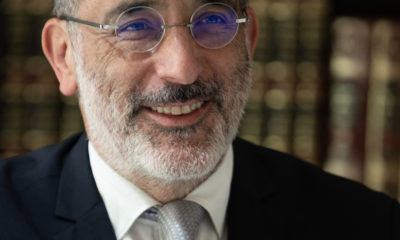
Parshot/Festivals

Making your mark on the seder plate
The seder plate takes centre stage on our Pesach tables, playing a crucial role in bringing the story of the Exodus to life. But did you ever stop to think that you could add items to the plate – foods that symbolise something important to you and represent the reality of our modern world? The Passover story is about freedom, and many Jews around the world have taken to adding items to protest forms of slavery or oppression in the 21st century.
This year, with refugees fleeing the brutal invasion of Ukraine, this becomes even more relevant and poignant. Olives have been introduced to the seder plate to symbolise the hope for peace (as they come from the olive branch), and placing olives on the seder plate this year brings to the fore the tragedy of the man-made catastrophe playing out in Europe.
As one Jewish resource says, “The Jewish community in Ukraine isn’t reclining tonight. They aren’t recounting the story of slavery, plagues, and ultimately finding freedom. Instead, they are the ones that are running or fighting for their lives. Instead of counting plagues, they are counting their dead. There’s literally no time for their bread to rise. Our people have been here before. The tragedy of lives ruined and the trauma that will live on for generations is heavy in the air, like smoke from the bombs are fires that burn nearby.”
The tradition of adding to the seder plate isn’t new, and some seder plates are now being made with extra spaces for such additions. “We put an orange on our seder plate,” says local Jewish educator Adina Roth. She explains that this originated with people who wanted to represent the struggles of living freely as a LGBTQI+ (lesbian, gay, bisexual, transgender, queer, and intersex) person, but has since come to represent all forms of oppression. It’s commonly added to seder plates around the world.
Over the past two years, many Jews have made additions to their seder plates to symbolise the loss of life and freedom during the pandemic. Roth asked her students what they would put on it, “so we could know we were in the age of pandemic and therefore in a particular type of restriction”, she says. Placing something on the plate that represents the millions of lives lost is a powerful way of honouring them.
Roth also asks her students “what they would put on the seder plate to tell the South African story, which is its own freedom story”.
As Roth demonstrates, this is an opportunity for children and teenagers to play a vital role in the seder, and to be included in a discussion about what freedom means to them.
Rabbi Greg Alexander of the Cape Town Progressive Jewish Congregation says placing “Miriam’s cup” on the seder table is one way of honouring this heroine who is often forgotten in the sweeping drama of the Exodus.
“There would be no Moses without Miriam,” he points out. “It was she who watched him down the Nile River and negotiated with Pharaoh’s daughter to get Yocheved, his mother, to be his wet-nurse. It’s none other than Miriam that our tradition understands was responsible for the entire supply of water in the desert as the Israelites wandered through the wilderness.
“So here’s a custom that many have started to include on their seder tables,” he says. “Decorate a beautiful cup for Miriam and give it a place of honour at the centre of the table. At a suitable moment in the evening, tell a few Miriam tales and explain the midrash that Miriam provided the well of water that sustained the Israelites in their 40-year trek around the Sinai Peninsula.
“Ask everyone to pour a little bit of water from their own glasses in turn into Miriam’s cup in celebration of the unsung female heroines of the Exodus and of women since. As they pour the water, let them name a female ancestor [recent or ancient], who has inspired them. Declare “Zot kos Miriam, kos mayyim chaim [this is the cup of Miriam, the cup of living waters]” and place it next to Elijah’s cup on the table.”
There are many other creative additions to the seder plate. People have added chocolate, coffee, or cocoa beans to draw attention to forced child labour in the chocolate and coffee industries.
Some who feel comfortable adding potatoes have added them to represent the continuous exodus of Jews from oppressive regions. This is because when Ethiopian Jews were brought to Israel via Operation Solomon in 1991, they were so ill and emaciated, they couldn’t stomach a substantial meal. Instead, doctors fed them boiled potatoes and rice. It’s become customary to place boiled potatoes alongside the green vegetable – karpas – that we dip in salt water.
Roth says many South African Jews don’t know about the possibility of adding to the seder plate. But she believes it’s something that people can find incredibly meaningful, and can help participants of all ages become more involved and invested in the seder.










